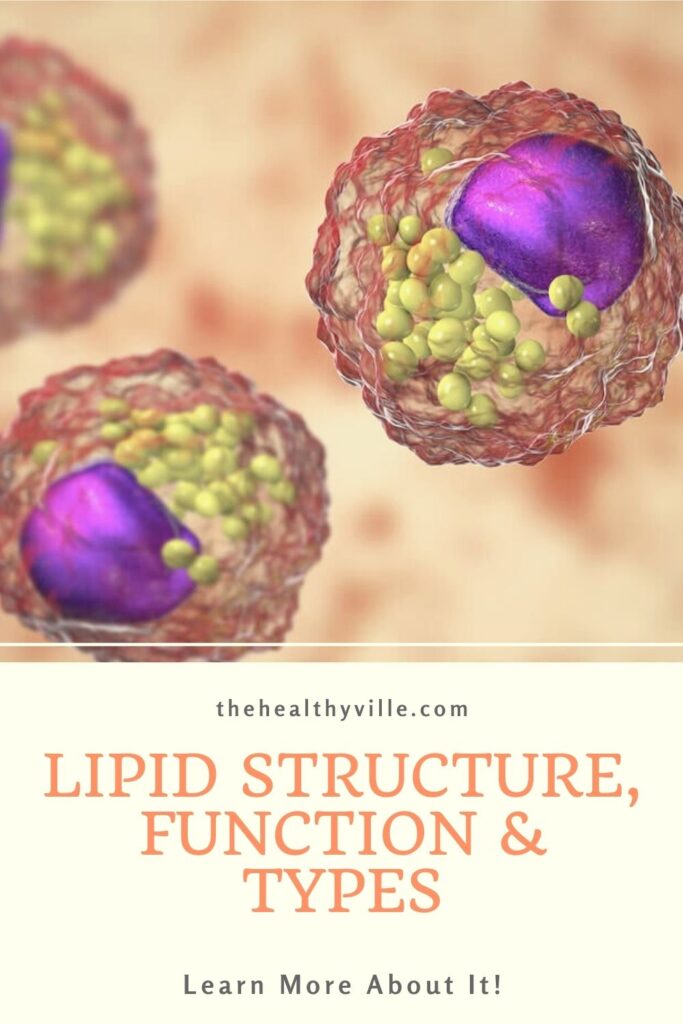Lipid structure plays important roles in the body. Lipids not only serve as an energy reserve, but also take part in the transport of some nutrients. Learn more about them.
Lipids play a very important role in health. Not only are they key as an energy reserve of the body, but they also intervene in essential processes of the organism such as, for example, the transport of nutrients, the regulation of body temperature, among others.
Together, these substances are diverse and come from various sources. In fact, they are known for the role they play in the feeding of living beings, since they are key for the assimilation of some vitamins and for an optimal functioning of the metabolism.
What exactly are lipids? Its duties? Since we usually read or hear this term when it comes to health and nutrition, it is convenient that we solve these questions. We will detail more about it below.
Lipid structure
Lipids are a group of biological molecules that intervene in relevant processes in the body. In particular, they are part of the cell membrane, are the basis for the production of hormones and, above all, are responsible for storing energy.
The lipid structure includes hydrogen and carbon, although to a lesser extent they can contain sulfur, nitrogen or phosphorus. In any case, they are characterized by being insoluble in water and by representing one of the main energy reserves for the body.
Now, although the term lipid is often refers to fat, it is important to note that not all lipids are fats, but all fats are lipids. Thus, we find several types of lipids, which are classified according to their physical properties and the functions they perform.
Types of lipids
As detailed in an article published in the scientific journal Biochimica et Biophysica Acta, the term “lipids” groups together various compounds that have relevant biological functions. Therefore, when talking about these substances, it is important to know how they are classified. What types of lipids are there?
Phospholipids
Phospholipids consist of chains of fatty acids, phosphate, and glycerol. They form hydrophobic structures, which means that they repel water. Its most important function is the formation of cell membranes.
In addition, they also carry out other actions, such as the digestion of other fats in the small intestine. The body has the capacity to generate all the phospholipids it needs.
Cholesterol
Cholesterol is an essential molecule for the body. Contrary to what many people think, it is not always bad. It is part of cell membranes; In addition, it is the precursor of different substances, such as some vitamins or hormones such as steroids.
Therefore, a certain amount of cholesterol is essential for the body to function properly. However, too much of it can cause it to accumulate in the blood vessels. This is a problem, since these vessels can become clogged and, consequently, there is a greater risk of heart attacks or ischemic problems.
Glycolipids
Glycolipids are fats that also contain sugar molecules in their structure. Its most important function is related to the immune system. They are found on the outside of the cell membrane and function as a signal for it.
Triglycerides
Triglycerides consist of fat and alcohol. Specifically, they are the molecules into which excess energy or sugars in the body are transformed. That is, they will form its energy reserves.
An excess of triglycerides, just like cholesterol, may also accumulate in the blood vessels and in the rest of the body. Because of this, its high levels are associated with health problems.
Steroids
Steroids are molecules consisting of cholesterol and hormones. Some examples may be testosterone or estrogens. These need cholesterol to be synthesized in the body. Specifically, they perform regulatory and activating functions.
What are its functions in the body?
Lipids, depending on their type, carry out different essential functions in the body. These are structural or signaling functions. In the following space we detail some of the most important ones.
Energy reserve
The main function of this substance is to serve the body as an energy reserve. One gram of fat can provide 9 kilocalories to the body. Excess of sugars is stored in the form of fat deposits in people who consume too much sugar. They will be used when other sources of energy, such as carbohydrates, are lacking.
Structure formation
Some lipids form important structures in the body. The most important example is about cell membranes. They consist of a specific type of lipid; in turn, they are essential to shape and protect the cell.
Cellular communication
Cells use vitamins, hormones, and glycolipids, among others, to communicate with each other. These have the function of regulating some secretions and various responses of the body.
Transport
There are lipids that function as transporters for other substances through the body, such as nutrients. Along with bile acids and lipoproteins, this is how the function is performed, in general.
Thermal regulation
The fat deposits that accumulate under the skin and around the organs act as protectors from the cold. Fat prevents heat from dissipating out, which prevents the body from cooling down.
What to remember about lipids?
Although the types and functions of lipids are varied and complex, in general they are organic compounds essential for life. To a certain extent, they are decisive for the proper functioning of the body. However, in excess, some varieties are harmful.
Therefore, it is convenient to maintain healthy lifestyle habits, especially in relation to food, and to carry out regular medical check-ups. In case of any abnormality in its levels, it is essential to follow medical treatment.
Don’t forget to SHARE everything you know about lipid structure, function and types with your friends and family on your social networks!

